If you are visiting Lisbon for a short break, we help you getting to know what to visit taking advantage of how close the city of Lisbon is to other areas with different landscapes from the one you will find in the heart of the city. And that is exactly one of the reasons Lisbon is a great choice for your accommodation.
If you like history and visiting monuments is a priority when you are engaging in other country’s culture, below we will suggest you five monuments you cannot miss in the region of Lisbon:

Mosteiro dos Jeronimos – Monastery of Jeronimos
Located in one of the most famous, charming, and full of history neighbourhoods of Lisbon, Belém, Jerónimos Monastery is often known as the ‘jewel’ of the Manueline style (a Portuguese adaptation of a late gothic). This style combines architectural elements from the Gothic and Renaissance periods, adding them to a royal and naturalistic symbolism, which make it totally unique. In 1496, King Manuel I asked the Santa Sé for permission to build a large monastery at Lisbon’s entrance, near the banks of the Tagus River. It started to be built in 1501 and only ended almost a century later. King Manuel I and his descendants were buried in marble tombs located in the chancel of the Church and side chapels of the transept. The monastery’s dedication to the Virgin of Belém was another factor that influenced the royal decision.
The Jerónimos Monastery came to replace the church that invoked Santa Maria de Belém, where the monks of the Order of Christ assisted the many sailors who passed by. For this reason, King Manuel I choses the monks of the Order of Saint Jerónimo, whose functions were to pray for the king’s soul and give spiritual support to those who left from Praia do Restelo to discover new lands. Because it was built on the banks’ sand from the Tagus River, the monastery structure did not suffer much damage from the 1755 earthquake. In 1907 it was declared a National Monument and in 1984 it was classified as “Cultural Heritage of All Humanity” by UNESCO.
There is much more to say about this monument, but there is no other way for you to perceive the magic than to schedule a visit! Awfully close to the monastery you can also find another jewel of the Manueline style contemporary with it: the Belém Tower. Be sure you take some Pastéis de Belém for the way!
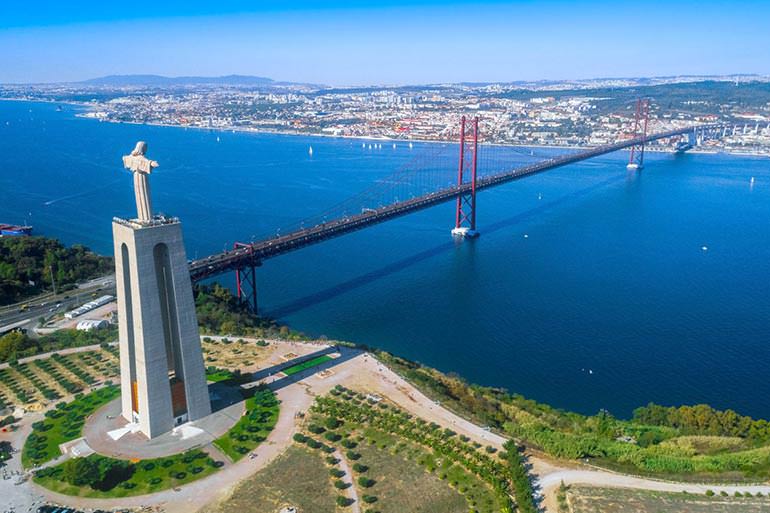
Cristo Rei – Christ the King
Admiring the city of Lisbon stands remarkably the Cristo Rei, imposing itself on the landscape when we are facing the Tagus river, being an incredibly good excuse for you to cross the 25th of April bridge to the south side.
The idea of building the National Sanctuary of Cristo Rei came up in 1934 during a visit by the patriarch of Lisbon, to Brazil. After having visited the imposing Cristo Redentor do Corcovado in Rio de Janeiro, he wanted to build a similar figure at the capital. Is with the outbreak of World War II that on 1940, in Fatima, the Portuguese bishops met and formulated the vote: “If Portugal were spared from the war, raise a Monument to the Sacred Heart of Jesus would be on Lisbon, a visible sign of how God, through Love, wishes to conquer all humanity for Himself ”. In 1949, as Portugal did not participate in the second world war, the first stone was laid on for a construction sponsored only with public donations that will take 10 years to be finished.
Although Cristo Rei has been an important pilgrim destination it does not fail to surprise the less religious with its 80-meter height platform with an astonishing panoramic view over the city of Lisbon and the Portuguese “Golden Gate” bridge. See more info at tugatrips.com
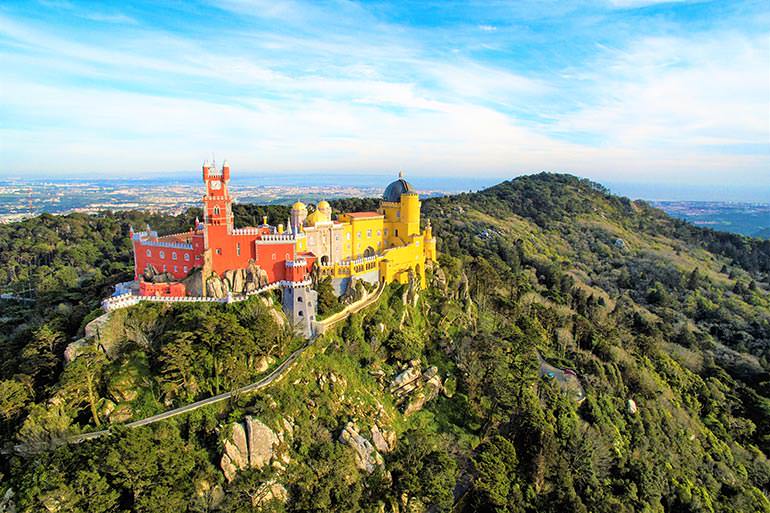
Palácio da Pena – Pena Palace
Just a 30-minute drive from Lisbon, we find one of the most beautiful and enchanting landscapes in the Lisbon region, with several surprises loaded with history. We speak of the heart of Sintra within the Natural and Protected Park of Sintra – Cascais where you can find monuments that translate the greatness of the Portuguese in different centuries. There are at least two that you cannot miss.
At about 500 meters of altitude, at the top of the beautiful Sintra hill, we find the Park and Palace of Pena, which stands out as an example of Portuguese Romantic architecture and as the first palace in this style in Europe (the Pena National Palace was built about 30 years before Neuschwanstein Castle, in Bavaria, one of the meccas of the castles). It dates to 1839, when the king consort Fernando II of Saxe Coburgo-Gotha (1816-1885), acquired the ruins of the Monastery of Nossa Senhora da Pena and started adapting it to his palace. Extremely fanciful, Pena architecture uses Moorish, Gothic and Manueline motifs, but also the Wagnerian spirit of the Schinkel castles of central Europe. It was home to kings between 1834 and 1910 and today it is one of the most sought-after tourist attractions, along with its park – which extends over 85 acres – has the lushest landscapes with native and exotic species from the four corners of the globe.
If all of this are not enough reasons, there is still a beautiful love story behind the construction of this palace to discover and the opportunity to understand the habits and crazes of the last Portuguese royal family. See more info at tugatrips.com
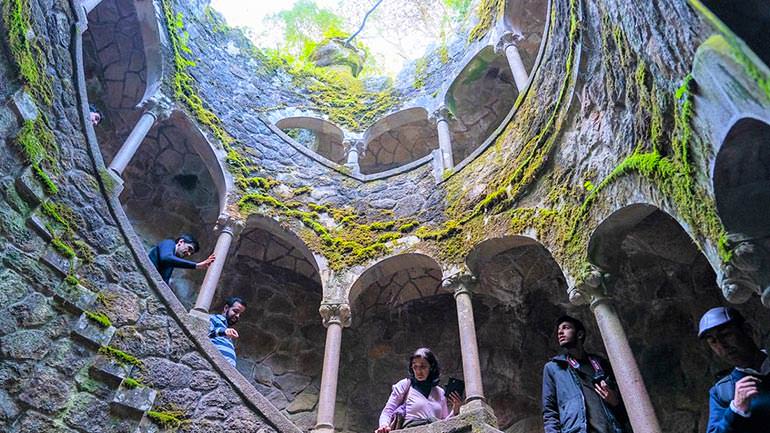
Quinta da Regaleira
Coming down from the top of the hill to the centre of the village, you will find, after a ten minutes’ walk, the amazing Quinta da Regaleira. Quickly you will understand how magical this place is.
Quinta da Regaleira, which was initially a space acquired by the Countess of Regaleira and therefore its name, is, today, the scenario left to us by Carvalho de Monteiro when he acquired his land in 1904 to build there his palace and renovate the gardens that tell us stories full of mysteries and double meanings.
Born in Rio de Janeiro and holder of a prodigious fortune (so rich he was known as Monteiro of the Millions), he associated to his unique architecture and landscape project, the creative genius of the Italian architect and scenographer Luigi Manini (1848-1936). Despite its palace, built in a romantic revivalist style, recovering Gothic, Manueline and Renaissance architectural and decorative forms, mixed with mythical and esoteric symbolism, reflecting its wealth, and making visitors delighted, it is its gardens and what lies along the way that really take our breath away.
In this stone book that is Quinta da Regaleira (Quinta would stand for Villa), he printed the vision of a cosmology, a synthesis of the spiritual memory of humanity, whose roots immerse themselves in the mythic tradition. Using references to mythology, Olympus, Virgil, Dante, Camões, the Templar mission of the Order of Christ, great mystics and thaumaturges, the enigmas of Real Art, the Magna Obra Alquímica, created the scenario of an initiatory journey, through a symbolic garden where heaven and earth merge in a sensitive reality.
A visit that, much more than beauty, has so many other things to tell us, if we want to hear. We recommend a guided tour so as not to miss any detail. See more info at tugatrips.com

Palácio Nacional e Convento de Mafra – Mafra National Palace and Convent
You will find a village with excellent cuisine and one of the most important Palaces in the country only 45 minutes from Lisbon. Being so close, you cannot miss the chance to go to National Palace and Convent of Mafra.
Built by King D. João V in the 18th century, to fulfil a succession vote, it is one of the most incredible Portuguese palaces and the most important baroque monument in the country. It comprises the Royal Palace, the Basilica, and the Convent. It has important collections of Italian sculpture, Italian and Portuguese painting as well as two chimes, six historic organs and a hospital from the 18th century.
A monumental complex with 1200 rooms and 4700 doors and windows. Of all, the most fascinating is probably the Library, one of the most beautiful and important in the world, which holds about 40 thousand books on its shelves. Not being the habitual residence of the Royal Family, Mafra Palace has always been visited by kings, to attend religious parties or to hunt in Tapada and, today, the Palace is part of the European Royal Residency Network. See more info at tugatrips.com
were we able to make you curious to visit these monuments or perhaps you have already visited one of them? leave us your comment and by the way, do not forget to recommend this article to your friends! Thanks!
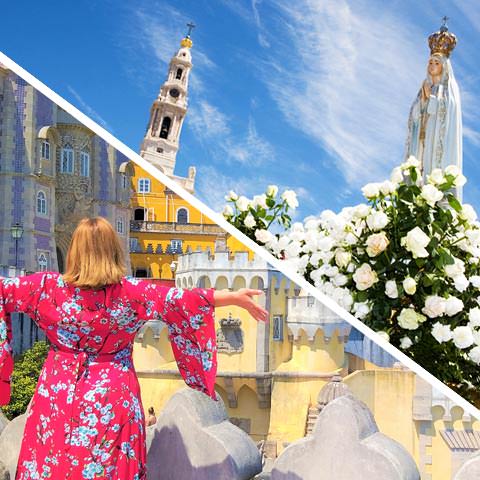
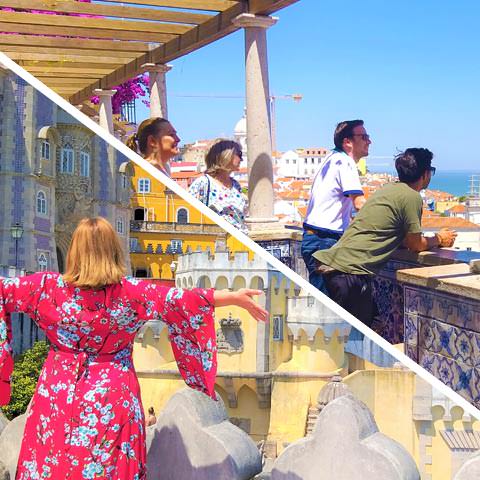




0 Comments